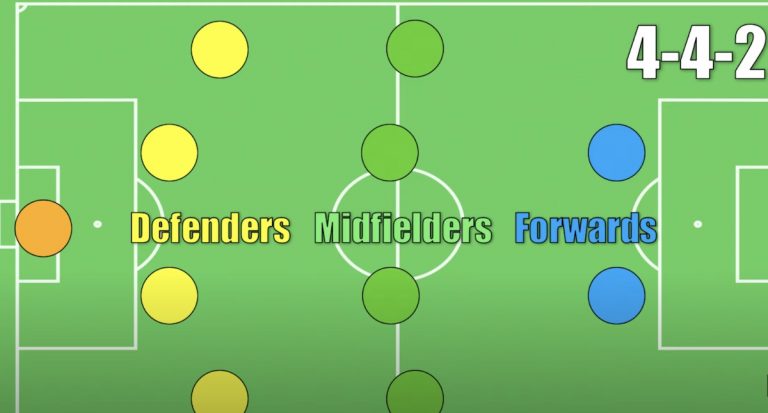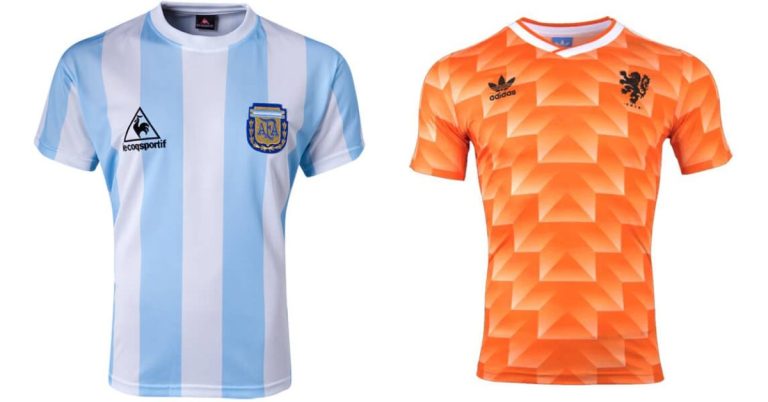What Is Futsal?
There are numerous iterations of traditional association soccer worldwide.
Variations of the game can be played on the beach, street, indoor and even freestyle soccer in which players compete utilising a range of tricks or advanced skills.
One of the most popular forms of soccer is called Futsal. The sport is continuing to increase in popularity, has been highly praised for its role in enhancing technique and personal development of its players. It is incredibly entertaining and even fashionable amongst some of the world’s biggest stars.
But what exactly is Futsal?
What Is Futsal?
Futsal is a form of soccer that has become a standalone sport in its own right with adaptations to the rules and playing style of the original game.
It is primarily played indoors with five players per team, typically takes place across a smaller area and uses a heavier ball than soccer with an emphasis on fast passing and tight ball control.

Where Did Futsal Begin?
Futsal originated in South America during the 1930s, specifically from regions such as Uruguay, Argentina and Brazil. The sport was initially devised as a way for soccer players to maintain both their skill levels and fitness during the off-season. It has now gained worldwide popularity with FIFA now recognising it as an official form of indoor soccer.
The name “futsal” is a combination of the Spanish or Portuguese words for “futbol” meaning soccer and “sala” which translates to indoor. In the 1950s, it was introduced into Europe and thirty years later both the Asociación Mundial de Fútsal (AMF) and Fédération Internationale de Football Association (FIFA) became responsible for its regulation.
What Is The Difference Between Futsal And Soccer?
The games of Futsal and Soccer (also known as association football) have several distinct differences. Whilst a soccer team fields eleven players, the former is played with only five members per team.
The size of each field also differs. Futsal takes place on a smaller playing surface with typical dimensions of around 20 x 40 yards. Soccer on the other hand is played on a much larger pitch, usually 100-130 yards long and approx 50-100 yards wide. Also the ceiling must be at least four metres high.
A Futsal ball is smaller and heavier than a soccer ball with less bounce. The size of a soccer ball is fairly universal and referred to as a size 5. Futsal balls vary – a size 2 being ideal for ages 7 and under, size 3 suitable for ages 8 to 12 and size 4 perfect for players aged 13 and up.
It also prioritises technique and skill, the smaller playing area and adapted ball make it harder to score, which encourages more creativity and improvisation.

How Long Is A Game Of Futsal?
A game of Futsal is usually played for two periods of 20 minutes each and with a half-time break of 10 minutes. Unlike in soccer, the clock is stopped for injuries, when the ball goes out of play or when a goal is scored – with the time added to the end of the period.
Each team can also request a one-minute ‘time out’ during a game.
During a play-off contest, if the game ends in a tie then extra time is played and consists of two periods that are five minutes long each. If the game is still tied after extra time, the match will then be decided by a penalty shootout. This doesn’t typically apply to matches played during a regular season.
What Are The Four Positions In Futsal?
In Futsal, players are assigned specific roles on the field – including goalkeeper, defender, midfielder and forwards.
Each team consists of one goalkeeper (Goliero), two defenders (Fixo), two wingers (Ala) and a forward (Pivo). The Portuguese names of these positions are more commonly used in Brazil.
Each position is not as rigid as they might be in soccer. Players are actively encouraged to move fluidly around the playing area in order to disrupt their opponent and create scoring opportunities.
What Are Some Other Rules Of Futsal?
- Unlimited substitutions are allowed but they must be made without stopping play and only occur from the ‘substitution zone’ – an area in which players can enter and leave the game.
- A ‘kick-in’ is used instead of a throw-in when the ball goes out of bounds.
- A direct free kick is awarded for most fouls and a penalty kick is awarded for serious incidents such as fouls inside the penalty area.
- A goalkeeper has four seconds to release the ball back into play.
Why Is The Ball In Futsal Smaller?
A Futsal ball is smaller and designed to be used indoors. It makes the game more challenging, enables players to execute a variety of intricate moves and encourages the handling of the ball with greater accuracy.
The ball is typically made of a polyplastic material, has a circumference of approximately sixty centimetres and weighs between around 400 grams.
It also has less bounce than a regular soccer ball, making it easier for players to control it closer to the ground. This directly allows movement in tight spaces, which is important for producing a high-energy and fast-pace game.

Is Futsal Harder Than Soccer?
Futsal and soccer have different skill sets and characteristics that make them both unique and challenging in their own ways.
Soccer at the highest level is of course incredibly difficult to play. It is highly competitive and requires an immense amount of talent to be remotely successful. Arguably, Soccer is considered to be more physically demanding, its larger pitch means that players are required to cover more ground during each game.
Yet it is also inherently hard because there is a focus on precise ball control, rapid passing and lightning quick decision-making. The smaller dimensions of the playing surface also limits the amount of space players have to move and find space which makes it more challenging. Additionally, the use of its smaller and heavier ball requires superb technical ability to control it.
The difficulty of each sport often depends on the individual player’s strengths or weaknesses and their ability to adapt to the specific demands of either game.
Do Professional Footballers Play Futsal?
It is fairly common for soccer players to have experienced playing Futsal in some capacity whilst continuing to play soccer as a career at the same time.
It serves as a fantastic training method, helping to sharpen existing skills such as quick passing, ball control and in-game decision making. Players can also improve their ability to function in tight spaces and aid their spatial awareness.
Many professional soccer players and managers actually praise Futsal for developing the basic skills they already use on the soccer field. A variety of world soccer stars have been known to play the game including Andrés Iniesta, Lionel Messi, Luis Figo and even Pelé.
In Which Country Is Futsal Most Popular?
The interest in Futsal continues to grow, enjoyed worldwide by players of all abilities and skill sets. However, historically it has been embedded into particular cultures and embraced more fondly by certain parts of the world.
It is incredibly popular in South American countries – amongst nations credited with the sport’s origins including Brazil, Argentina and Uruguay. These particular regions have a deep-rooted passion for the sport and have developed a number of world soccer stars who began by playing it.
Even European football has grown to love the game – countries like Spain, Italy and Portugal have built highly competitive teams to compete in international tournaments such as the UEFA Futsal Champions League.
Asian nations like Japan, Thailand and Iran have also forged a rich culture around the sport, finding success in international competition. The sport has also become increasingly popular in the United States at both amateur and professional levels.
What Are The Benefits Of Futsal?
Futsal is beneficial to players of all ages and skill levels. It automatically improves ball retention which can then be translated to the soccer field. It is a very fast-paced game with players constantly moving that can have major benefits for cardiovascular fitness.
The game also hones skills in quick thinking and decision-making, whilst also promoting creativity and problem-solving skills, that allows players to take risks or attempt new ideas under pressure.
Other less obvious benefits include developing teamwork and collaboration. Some of the best Futsal players work together and through non-verbal communication learn to master intricate passing moves to create scoring moments.

Typically it’s my passion for Sports and Music that get the typing juices flowing. But ultimately I enjoy writing or blogging about any topic I can get my keyboard thrashing hands on!




